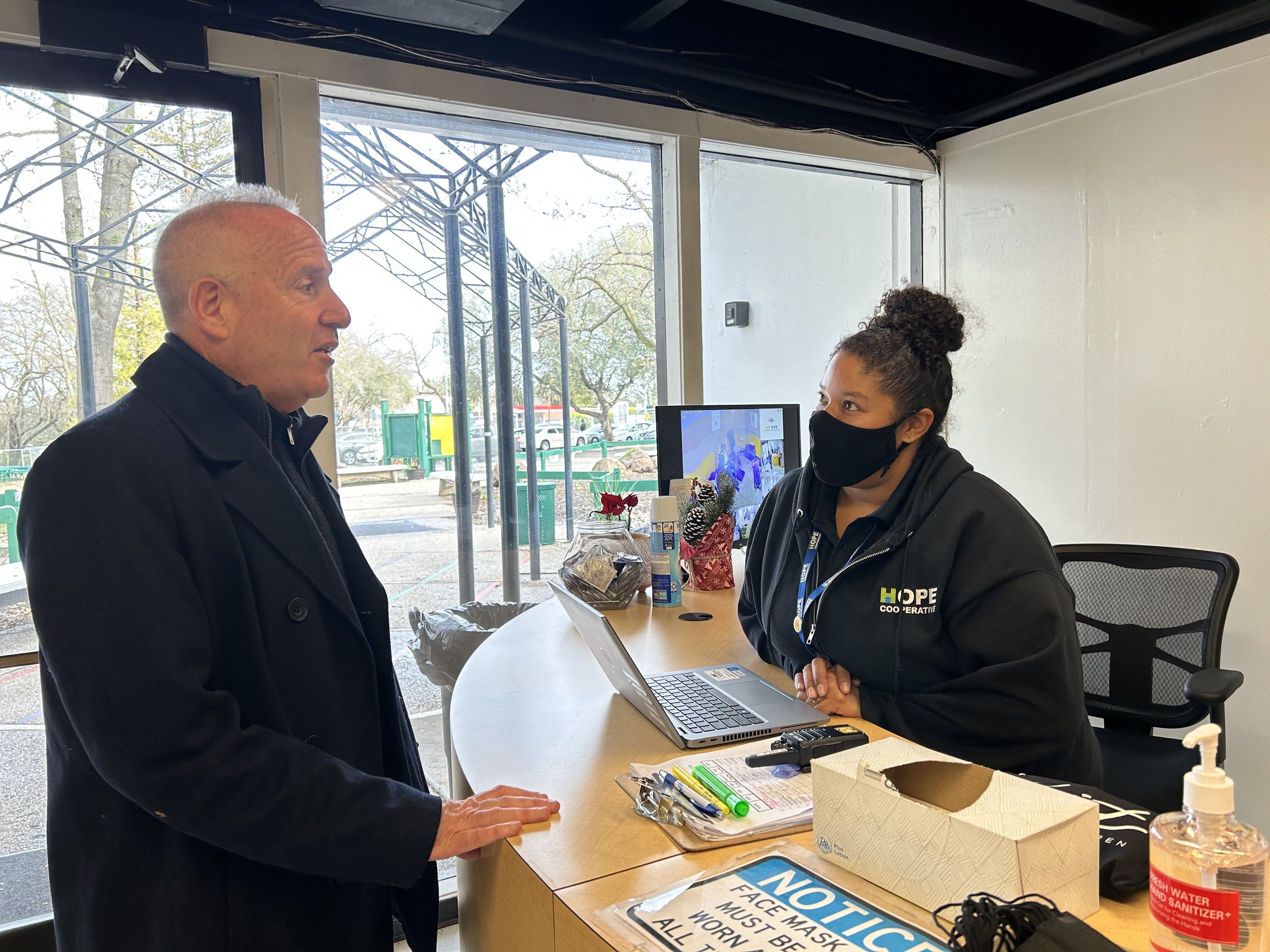21 days of rain, wind and thunder. How the City of Sacramento weathered the storm
Sacramento, CA (Jan. 24, 2022) - After three weeks of torrential rain and several days with wind topping 60 miles per hour, the City of Sacramento is recovering quickly thanks to careful planning and dedicated public servants.
A series of “atmospheric river” storms beginning in late December dumped more than half the regular annual rainfall total in a span of three weeks. With the ground completely saturated after the first night of rain, several consecutive days of strong winds knocked down trees, powerlines, and lamp posts throughout the city. From Dec. 31 to Jan. 13 the City of Sacramento received more than 25,000 requests for service, a 33% increase compared to last year during the same time frame.
Before the arrival of the storms, and throughout the duration of the weather events, the City’s Office of Emergency Management (OEM) served as the primary coordinating force among response departments and allied agencies, helping to identify, establish and deploy resources throughout the city and region. Representatives of OEM and different departments worked together in a large room at the city’s South Area Corporation Yard.
“I visited, and my colleagues have visited, department operations at the South Area Corp Yard, and I just want to say I was so impressed by the system our city has created to keep us safe,” said Mayor Darrell Steinberg at City Council on Jan. 10.
Staying dry
As the rain fell, City crews worked to prevent flooding. According to the Department of Utilities, crews cleaned drain inlets more than 12,000 times and cleared screens 1,800 times. The City of Sacramento’s levee system prevents major flooding but it also turns Sacramento into a city-sized bowl. Unless the water is consistently pumped out, the city will begin to flood. During and after the storms, a large screen in the Corp Yard operations center delivered real-time information on the status of the 147 pumps that keep the city dry.
When a pump failed the City could quickly switch to backup power. More than 90 of the city’s pumping stations experienced a power failure during the recent weather events, yet there was no major flooding. Residents could also pick up free sandbags at the North Area or South Area Corp Yards to prepare for potential localized flooding.
Throughout the year, DOU performs preventative maintenance on the flood management system by repairing canals, addressing erosion in creeks, and adding to the infrastructure. The 60 million-gallon McKinley Park water vault, installed in Oct. 2021, was put to work in January. The vault was filled and emptied several times during the storms but was never in danger of overflowing.
Cleaning fallen trees
The City’s Urban Forestry department saw a 2115% increase in calls during the storms with the wind and rain downing an estimated 1,500 trees. To complicate matters, many trees that came down during the storm also knocked down live power lines. Before a City forestry crew can go in, the Sacramento Municipal Utility District needs to clear it for safety.
In situations where trees have fallen on buildings, cranes often are required. The exponential increase in tree debris saw Public Works bring in professional sawyers from other municipalities, private contractors and Team Rubicon, an international non-government organization that specializes in emergency response.
“We are engaging every available resource to address these issues, and we are actively searching for additional resources,” said Ryan Moore, City of Sacramento’s Director of Public Works.
Bringing people indoors
As the weather turned, the City’s Department of Community Response activated respite centers, including the Outreach And Engagement Center on Auburn Boulevard. City facilities provided more than 900 bed nights to those in need of a safe and warm place to stay. Outreach workers from DCR were out in the field daily during the storms urging people to come indoors.
DCR staff also played a pivotal role in coordinating with the County of Sacramento and supporting its weather-respite activities. They also worked with Sacramento Regional Transit to provide free transportation to all weather-respite centers, including shuttles that picked people up from outside City Hall.
Many of those who sought respite are being transitioned into longer-term sheltering programs. “One of the great things about our Outreach and Engagement Center, as people came in from the weather, we took that opportunity to provide more comprehensive care and connect them additional services,” said Nick Golling, Homeless Services Manager for DCR.








